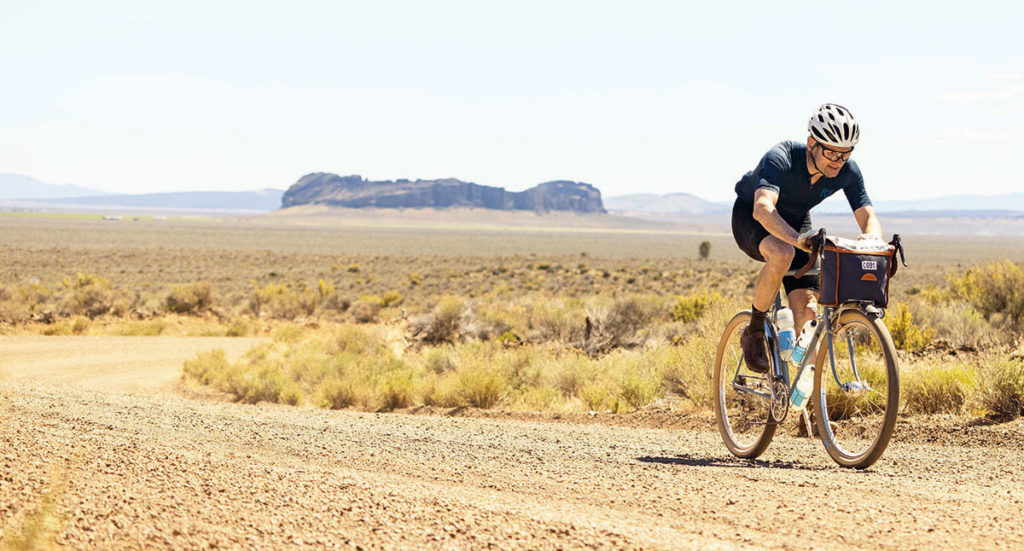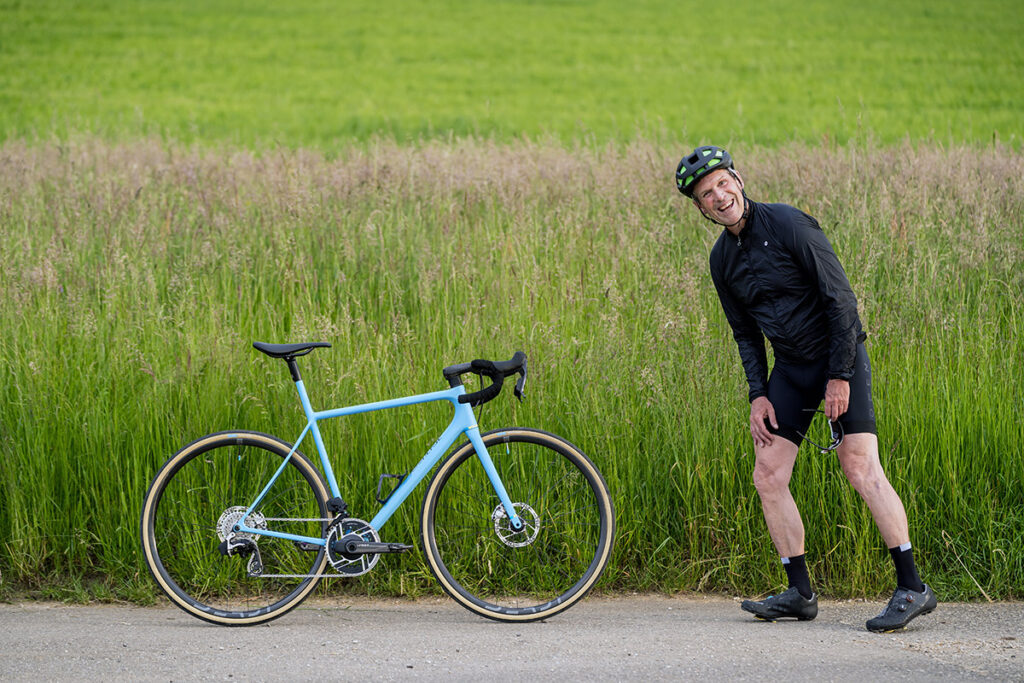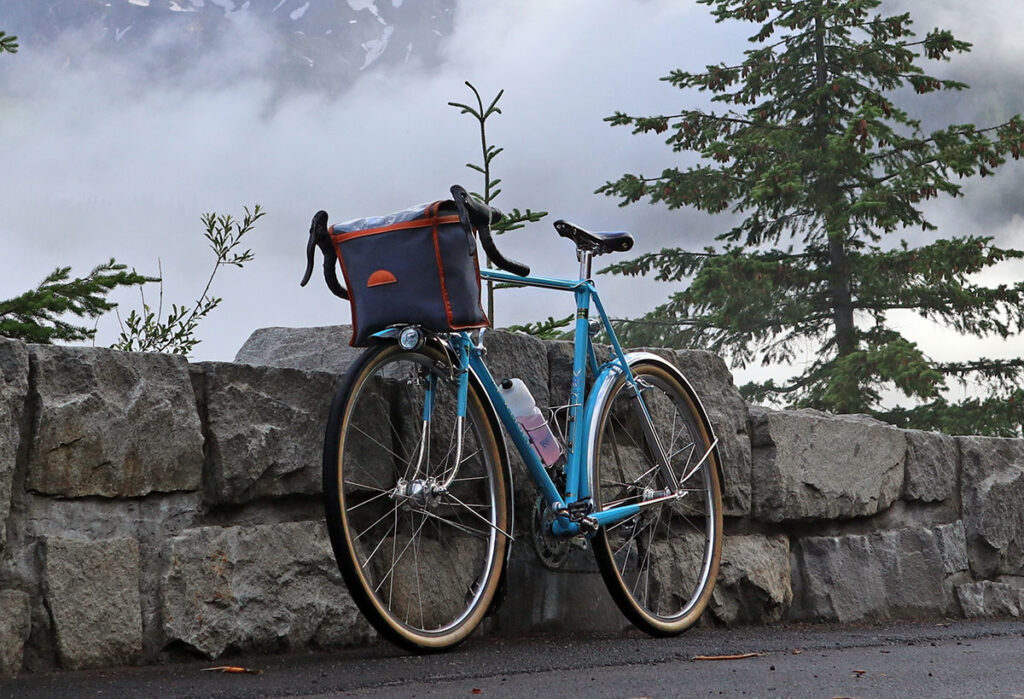Chains: When to wax, when to lube
Ever since waxing chains has become popular again, some proponents say that everybody should wax their chains, all the time. They usually point to the (marginally) lower resistance of a waxed chain compared to lube. Yet others prefer to wet-lube their chains, as they’ve done for decades. Their reasoning is that a squeaky chain is less efficient—and less fun—than a well-lubed one. Who is right?
After four years and 10,000s of miles of riding with waxed and wet-lubed chains under all conditions, here’s our take: There isn’t a single answer. Which works best depends on your riding conditions.
Before I continue, in the interest of full disclosure: Rene Herse Cycles sells Dumonde Tech wet lube. However, half my bikes run waxed chains, and half my bikes use wet lube. Because I ride what works best…

When to wax
In our experience, the advantages of waxing chains are:
- Chain is dry, so it doesn’t attract dirt and dust.
- Submersion in water or mud for a short time doesn’t remove the wax.
Obviously, that makes waxing chains ideal for gravel riding and racing. Dust on the chain draws liquid lube out of the chain links through capillary action. This leads to a squeaky chain even if conditions are dry. Waxed chains don’t have that problem. That’s why I run waxed chains in events like the Oregon Outback (above) and Unbound XL (below).

There’s another advantage to waxed chains: If the chain gets submerged during a creek crossing, wet chain lube tends to get washed out. Under the same conditions, the wax coating inside the chainlinks remains mostly intact. That’s even more the case when the chain gets muddy. As the mud dries, it draws liquid lube out of the chainlinks. Wax stays where it is.

What about road bikes? Wax is dry and clean. (That’s why Andy Kessler, co-founder of OPEN is smiling.) When you ride with a waxed chain, there’s no lube mist flying off your chain and onto your bike. And when you don’t ride your bike for a while, dust doesn’t stick to the chain. Any dust that settles on the chain can easily be wiped off.

When to lube:
Wax has one big disadvantage: It doesn’t like long-term exposure to moisture. If it rains, the wax inside your chain will get worn off within an hour or two, even if your bike has fenders that protect your chain from direct spray. Fortunately, that’s where our favorite wet chain lube excels. I’ve ridden the wettest edition of the 1200 km Paris-Brest-Paris ever, with rain from start to finish, yet my chain didn’t squeak. (And I didn’t relube it during those 50 hours of almost non-stop riding.)

There’s another advantage to wet lube: It’s easy to reapply. That’s why many ultra-racers like Lael Wilcox (above during her winning ride in the 2023 Tour Divide) prefer wet lubes. Over ten or more days of racing on gravel, any lube will wear off, but only wet lube is easy to reapply. In fact, it was Lael who recommended Dumonde Tech lube: “It’s the only stuff that works!”
How much hassle?
There’s more to chain treatment than performance: How much hassle it is to apply. Waxing chains isn’t for the faint-of-heart. It involves heating the wax and then submerging your chain. And if your chain gets squeaky, you need to degrease it and then start over. Fortunately, there are shops who will do the waxing for you. (I’m a card-carrying member of the ‘Chain Wax Club’ at Cascade Bicycle Studio in Seattle.)
With wet lube, you can apply it anytime, anywhere. It’s best to degrease a new chain before the first application of the lube, but not required. And after that, you just reapply when necessary.
Cost
The cost of waxing chains depends on whether you mix your own wax (usually combining beeswax with paraffin), buy a pre-made formula with secret ingredients, or take your chain to a shop to have it waxed. All of these options are going to cost more than a few drops of wet chain lube.
Which wax?
Obviously, not all chain waxes are created equal. Cascade Bicycle Studio uses Silca’s system (the classic wax, not the ‘no-degreasing-necessary’ formula), and it’s superb. However, it’s important that the wax is clean. Otherwise, your chain can squeak within a short time. (How do I know? I rode around Japan for weeks on a squeaky chain.)
What about liquid wax-based lubes? They promise the easy application of wet lubes with the performance of wax—but, in my experience, they don’t work. I’ve tried two, and they both didn’t even last 100 miles of dry riding! It seems that wax only works well if it’s melted and the chain is immersed in it.

Which wet lube?
The differences among wet chain lubes are enormous. Some come off with the first drop of water. Others are so goopy that your chain quickly turns into a black mess. Dumonde Tech has enjoyed a stellar reputation here in the wet Pacific Northwest—and it’s got Lael’s endorsement. It really is “the only stuff that works well.” That’s why we’ve added it to the Rene Herse program. (You can buy it at good bike shops, too.)
There are two different formulas: The ‘Lite’ is intended for dry climate. The ‘Regular’ works exceedingly well for our wet winters here in Seattle. The difference is that the Lite contains fewer solids than the Regular. You can’t go wrong with either. We offer them in an economical 2 oz (60 ml) bottle for shop use, as well as a small 0.5 oz (15 ml) bottle that’s perfect for taking on the road.
Summary
Here’s a simple way of thinking about waxing or lubing your chain:
- For a bike you ride only in dry conditions, where you don’t even think about fenders, waxing your chain is an excellent choice. The wax isn’t sticky, your chain stays clean, and it may even be a tiny bit faster. The only downside is the hassle of waxing your chain—or taking it to a shop to have it waxed. If you don’t want the hassle (and cost), wet lube works great, too.
- For long gravel rides, wax is definitely the best choice. It’s the only way to finish the ride with a chain that doesn’t squeak—unless you’re willing to reapply lube mid-ride. (Ultra-distance events may be an exception: Any lube will wear off over those distances, and wet lube is easier to reapply.)
- If a ride calls for a bike with fenders—even just for an hour or two of a long adventure—wet lube is my choice. It’s stays on, and the chain remains silent long after waxed chains have turned into squeaky grind.
That’s why the bikes I race in Unbound XL and the Arkansas High Country Race have waxed chains. So does my road bike. But my rando bikes with their full fenders run Dumonde Tech wet lube. Simple as that.
Photo credits: Rugile Kaladyte (Photos 2, 6); Linda Guerette (Photo 3); OPEN Cycles (Photo 4)
Further Reading:
- Dumonde Tech Chain Lube
- Andy’s OPEN × Rene Herse MIN.D. road bike
- J. P. Weigle’s amazing 20-lb rando bike for the Concours de Machines



